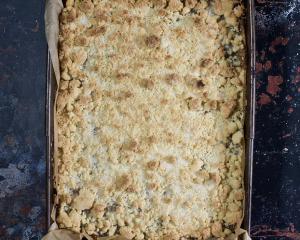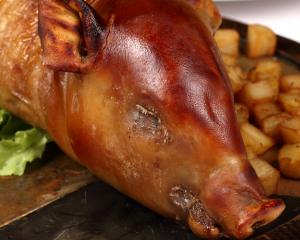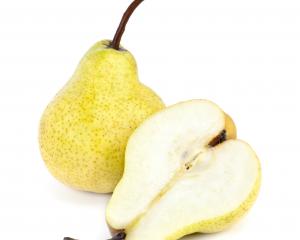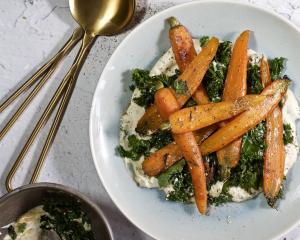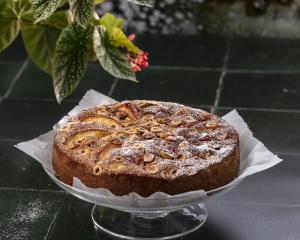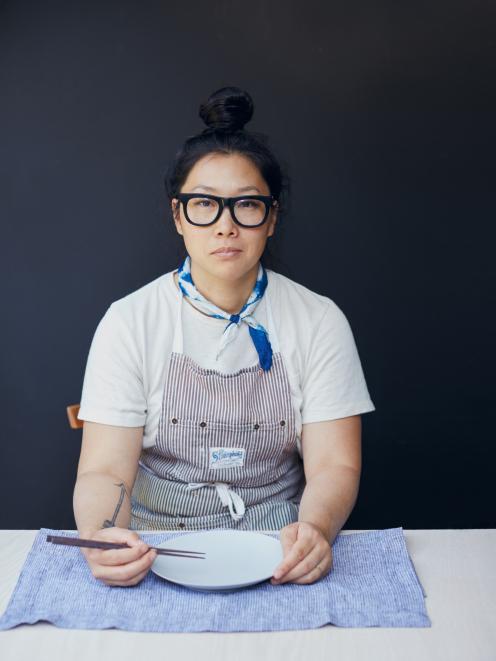
Caroline Hwang is out to prove cooking Korean food is not complicated or difficult.
Korean cuisine has been identified as one of the up-and-coming food trends of the past few years, especially as the craze for fermented foods - a cornerstone of the cuisine - gathers pace.
Last year, The New Zealand Herald reported that Korean food retailers and some mainstream supermarkets were reporting sales increases of up to 300% for Korean food products over the past two years.
Hwang grew up in the heart of Koreatown in Los Angeles and her love of cooking came from her grandmother, who looked after her and her brother while her parents were at work.
Despite her love of cooking, she went to art school and became an illustrator, but her passion for food and cooking eventually won over and she began working in kitchens, running an underground supper club and eventually moving into food styling.
This book is her endeavour to show Korean food is the easiest cuisine to cook. All it requires is a few ingredients - salted fermented shrimp, sake, brown rice syrup, Korean dried red pepper flakes and paste, dried seaweed and dried radishes - to get started, she says.

"Once the pantry and fridge has been filled, you should be ready to go."
She explains how Koreans often serve food saying "please eat well" as health is of the utmost importance to Koreans and eating well goes hand in hand with that.
Eating is also a communal experience with "banchan", the small dishes served at every meal, meant to be shared, as are the mains.
"The dishes are all meant to be eaten together, with no serving utensils, just personal chopsticks and spoons dipping into the communal pot."
Her book contains recipes for many of the banchan found in Korean restaurants and also for shop-bought treats, such as melon ice lollies or mochi filled with red bean paste, but without the additives found in bought products.
"For some dishes all it takes is a little marinating and grilling, such as the ever-popular Korean barbecue dishes like galbi [marinated short ribs] while others are a one-pot meal, like soondubu [soft tofu stew] or kimchijigae [kimchi stew]."
There is also a step-by-step guide to kimchi as well as easy snacks, dosirak, like kimbap (rice rolls with vegetables).
The book aims to leave the reader nourished and ending their meal saying what Koreans say when they are done with a meal, "thank you so much. I have eaten very well."
 Quick kimchi
Quick kimchi

This kimchi should also be called emergency kimchi for those days where you’re craving it but don’t have the time to wait for it to ferment. Quick and easy, make it and eat right away.
Makes 700ml
Preparation 35-40 minutes
Fresh
475g green cabbage (about ½ head), chopped into 5cm pieces
4 garlic cloves, crushed
4 spring onions, sliced into 2cm pieces
Spices
4 Tbsp coarse sea salt
2 Tbsp gochugaru (dried red pepper flakes)
Pantry
2 Tbsp chilli garlic sauce (such as sambal oelek)
2 Tbsp fish sauce
2 tsp granulated sugar
Method
Salt the cabbage in a large bowl and set aside for 1 hour, turning the cabbage every 30 minutes to draw out all the moisture. Rinse the cabbage and squeeze to remove any excess water.
Combine the remaining ingredients in a small bowl and mix together. Add to the cabbage and toss together, making sure all the cabbage is coated. Keep in an airtight container in the fridge for up to 2 weeks.
 Hotteok (brown sugar pancakes)
Hotteok (brown sugar pancakes)

Often bought from street stalls or carts in Korea, these make a warming winter dessert. They are a simple treat but oozing with brown sugar syrup goodness.
Serves 4
Preparation 15 minutes
Standing 1 hour
Cooking 10 minutes
Fresh
150ml milk, heated to lukewarm
Spices
½ tsp salt
Pantry
3g dried active yeast
2 tsp granulated sugar
125g plain flour, plus extra for dusting
33g sweet rice flour
45g soft brown sugar
1 Tbsp toasted walnuts, roughly chopped
1 Tbsp vegetable oil
Method
Mix the yeast, 2 teaspoons of the granulated sugar and the milk together in a small bowl and leave it to stand for 10 minutes. In another bowl, mix the flours and salt together. Add this to the yeast mixture and mix to a dough. Cover and leave to stand for 1 hour.
Mix the brown sugar and walnuts together. Turn the dough out on to a floured surface and divide into 4 pieces. Shape each piece into 10cm rounds.
Place 1 tablespoon of the sugary walnuts in the centre. Bring the edges up and over enclosing the filling and seal edges. Reshape into a flat disc. Heat the oil in a cast-iron pan over a medium heat. Cook for about 5-8 minutes until golden brown on each side.
 Bibimbap (mixed rice with vegetables)
Bibimbap (mixed rice with vegetables)

This dish is one of the most popular Korean dishes. It literally translates to mixed rice and is filled with a mix of veges. Meat can be added if you wish.
Serves 4
Preparation 30-45 minutes
Cooking 15 minutes
Fresh
2 carrots, julienned
1 red pepper, thinly sliced
1 courgette or a summer squash (preferably Korean), sliced into half moons
150g sesame spinach (see below)
150g sesame bean sprouts (see below)
4 fried eggs
Spices
salt and ground black pepper
Pantry
1 ½ Tbsp grapeseed oil
600g cooked sushi rice, divided 4 ways
4 tsp toasted sesame oil
spicy gochujang dressing (see below)
Sesame bean sprouts (sukju maul muchim)
Serves 4 as a side
Preparation 5 minutes
Cooking 5 minutes
Fresh
485g mung bean sprouts
1 spring onion, finely chopped
1 ½ teaspoons crushed garlic
Pantry
1-2 tsp toasted sesame seeds
2 Tbsp toasted sesame oil
1 tsp soy sauce
1 Tbsp vegetable oil
Sesame spinach
Serves 4 as a side
Preparation 5 minutes
Cooking 5 minutes
Fresh
500g spinach
1 spring onion, finely chopped
1-3 tsp crushed garlic
Pantry
1-2 tsp toasted sesame seeds
2 Tbsp toasted sesame oil
2 tsp soy sauce
Spicy gochujang dressing
Makes 60ml
Preparation 5 minutes
Pantry
4 Tbsp gochujang (red pepper paste)
2 Tbsp rice vinegar
1 Tbsp granulated sugar
1 tsp toasted sesame oil
1 tsp toasted sesame seeds
1 tsp brown rice syrup
Method
Heat the grapeseed oil in a frying pan and saute the carrots with some salt and pepper for 12 minutes. Set aside. Repeat with the red pepper and courgette and set aside after sauteing each item.
Divide the rice between 4 bowls and top with the sauteed vegetables, Sesame Spinach, Sesame Bean Sprouts and a fried egg. Drizzle 1 teaspoon of the sesame oil over each bowl.
Drizzle each bowl with the Spicy Gochujang Dressing to the individuals spice level and mix together all the ingredients in the bowl before serving.
Sesame bean sprouts (sukju maul muchim)
Bring a large saucepan of water to the boil. Blanch the bean sprouts for 30 seconds, then drain and squeeze to remove any excess water.
Combine the remaining ingredients in a medium bowl, add the blanched sprouts and mix to combine. Store in an airtight container in the fridge for up to a week or serve immediately.
Sesame spinach
Bring a large saucepan of water to the boil. Blanch the spinach for 30 seconds, then drain and squeeze to remove any excess water.Combine the remaining ingredients in a medium bowl, add the blanched spinach and mix to combine. Store in an airtight container in the fridge for up to a week or serve immediately.
Spicy gochujang dressing
You can use this dressing for any noodle or rice dish to add a little sweet and spicy flavour. Combine all the ingredients in a small jar and stir until thoroughly combined. This will keep for up to 2 weeks in the fridge.
Get it
Korean Food Made Easy, by Caroline Hwang, published by Allen and Unwin, $45



